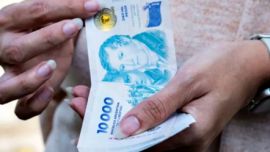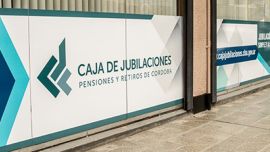Argentina’s government is confident that price hikes cooled slightly in November, based on what it says is a “significant slowdown” in food and beverage prices that are set to deepen with the implementation of Economy Minister Sergio Massa’s new ‘Precios Justos’ price-control scheme.
Commerce Secretary Matías Tombolini said this week that inflation may have gone below six percent and the forecasts of private consultants also go in that direction, although they do not see such a marked slowdown.
Central Bank Governor Miguel Pesce is also confident that Argentina’s Consumer Price Index (CPI) decelerated in November.
Another who is confident in the deceleration of the Cost of Living Index is Miguel Pesce, head of the Central Bank, who on Wednesday referred to inflation for the coming year. "The fight against inflation is no longer easy. It has proved to be complex, but we hope that after the acceleration that took place in July inflation will continue a downward process to achieve the goal of reducing it to 60 percent next year," said the official at a monetary conference on Wednesday.
Private consultancy firms feel a similar pulse, with November’s rate anticipated to be around six percent. But they are not so optimistic about the medium term. The drop last month may be a result of smaller increases in utility rates compared to October.
Analysts at the Fundación Libertad y Progreso forecast a November rate of 5.9 percent, which would put Argentina’s inflation for the first 11 months of the year at 87 percent – the highest since 1991. The firm also predicts a final annual rate of 94.1 percent for the whole of 2022.
"We observe a slowdown in the rise of prices in basic food basket categories," said the firm’s director Damián Di Pace, who said November saw marked increases in electricity, water, gas, mobile phone, cable and Internet tariffs, education, rent and taxis.
However, experts at C&T Asesores anticipate a slight moderation, forecasting 6.2 percent for November.
"The C&T retail price survey presented a monthly rise of 6.2 percent in November, slightly below the 6.8 percent of October but well above the 2.6 percent of November 2021. In this way, the year-on-year variation climbed to 94.21 percent, the highest since October 1991," they explained.
The consultancy firm pointed to increases in housing, which included increases resulting from the partial removal of state subsidies in electricity, gas and water, but also a new increase in the salaries of building managers.
This was followed by leisure, with a strong rise in items linked to tourism, which more than surpassed the decreases due to the offers in electronic products; while in goods and services, the rise in cigarettes stood out.
Meanwhile, clothing, transport and communications, and education jumped by around five percent and food and beverages moderated sharply to 3.8 percent monthly, the firm said.



















Comments